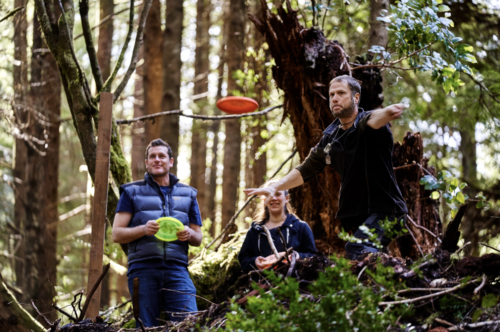
Food is never fresher than when it comes personally harvested straight from the source, and autumn on Oregon’s North Coast offers opportunities from both the forest and the beach.
Ninety-five-percent of all of Oregon’s clams can be found on the sandy shores of Clatsop County, between the city of Seaside and the Columbia River.
“The long, broad and flat beaches are really good habitat,” says Dane Osis, park ranger at the Fort Stevens State Park. “It’s a really popular activity here at the park.”
The season reopens Oct. 1 following an annual 45-day closure to allow juvenile clams time to mature. Before you go you’ll need a shellfish license ($8 for Oregon residents; $20 for non-residents), which can be purchased at various area retailers, as well as a clamming shovel or a “clam gun.” The so-called guns are essentially a tube made of plastic or metal that helps lift the clams from under the sand. These are recommended for beginners. You’ll want to get out on the beach an hour before low tide (find up-to-date tide tables for the North Coast here), keeping in mind that the lower the tide, the better the clamming. Look for siphon holes about the size of a dime or larger – the smaller the hole, the smaller the clam.
Once you’ve harvested several clams, move to a different area to clean them. And remember: while a broken clam may be more difficult to clean, they are still just as delicious.
Foraging for mushrooms is another popular outing in the fall around Astoria and Warrenton.
“The most popular are King Boletes, also known by their Italian name, ‘porcini,’” says Osis. “They come out after the big rains in the fall. People really like those.”
There are thousands of species on the coast, including Pacific Golden Chanterelles and the prized White Matsutakes, but there are poisonous species, as well, making it critical that mushroom hunters know their ‘shrooms.
“There are no shortcuts,” says Osis. “You definitely want to know what you are doing. Unless you are 100 percent sure of the identification, don’t eat it. Go with someone who is experienced and use a field guide. Look at all the characteristics, not just one or two. You should be as familiar with mushrooms as you are with vegetables in a grocery store if you plan on eating them. Get to know the good edibles. It’s not real hard to learn one or two mushrooms. Get familiar and expand.”
One of the best ways to do that is to sign up for a guided mushroom hike, which usually get underway in late September. To find dates and times for hikes at Fort Stevens, check the event calendar. Happy harvesting!
Photo by Justin Bailie



